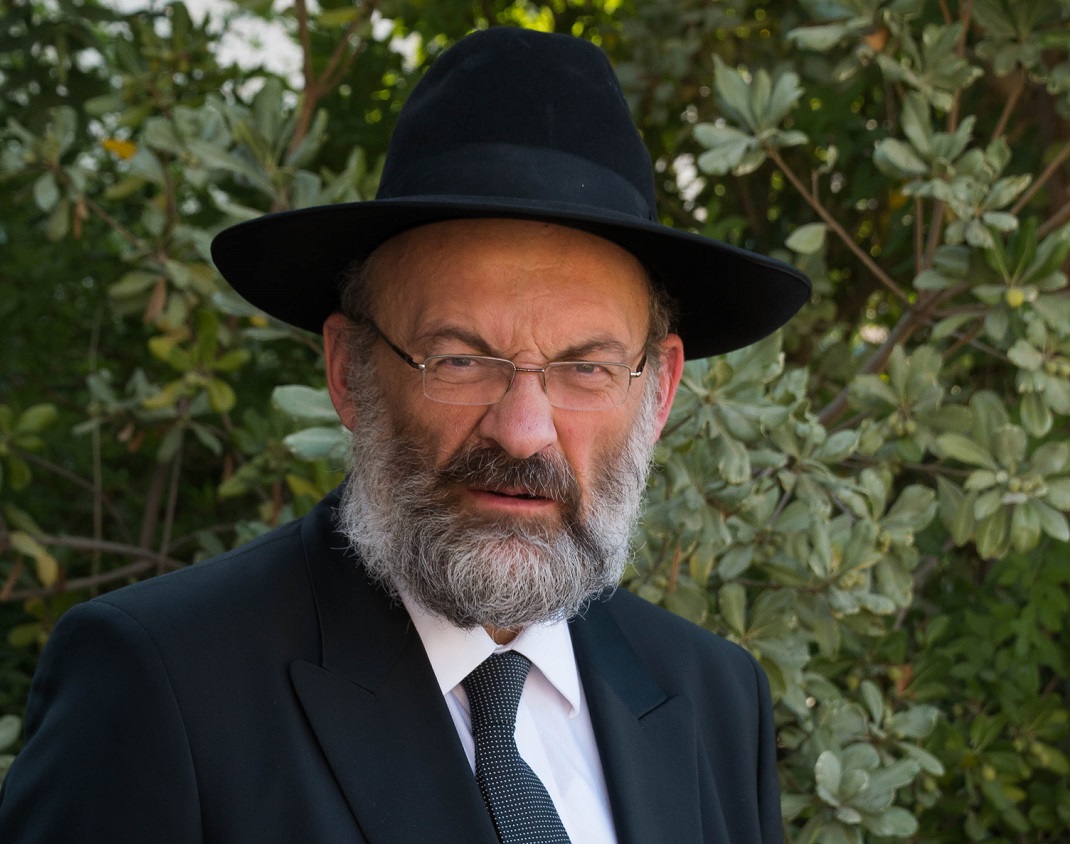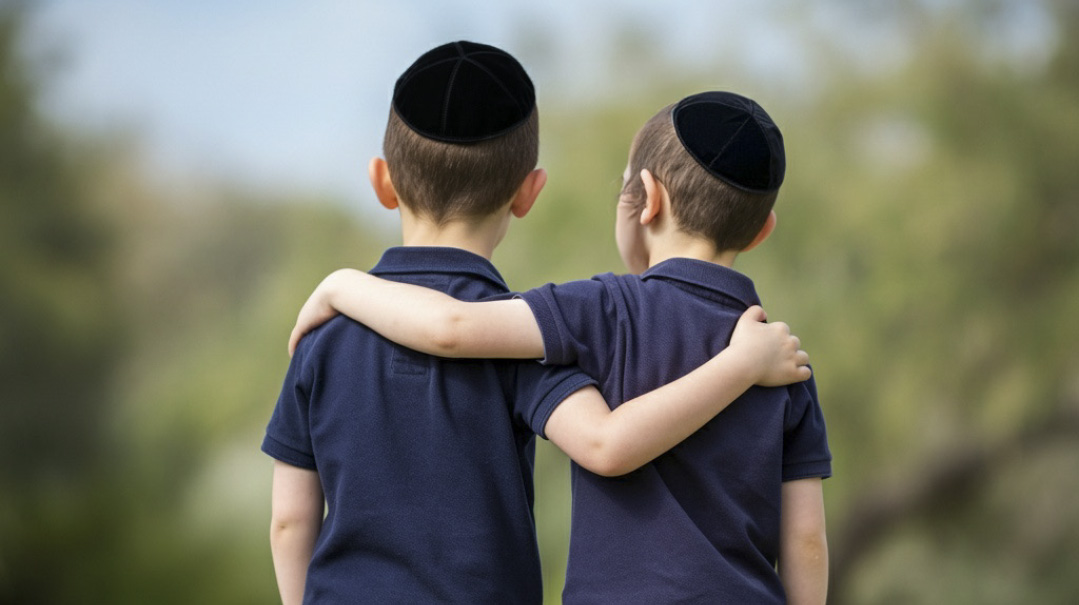Cosmic Crowns

When Chazal say one who does a mitzvah he was commanded to do is greater than one who wasn’t commanded, they don’t mean more praiseworthy. They mean the effects of his mitzvah are far greater than one done voluntarily
Prepared for print by Rabbi Eran Feintuch
What comes to mind when you think about accepting the Torah?
For many of us, Shavuos is a time when we strengthen our dedication to studying and supporting Torah. Inspired by the awesome power of the day, many people firmly resolve to devote so much more time to studying Torah for the rest of their lives. But so often, our grandiose plans are about as short-lived as our intentions to work off the cheesecake we enjoyed.
Beside the transience of our resolutions, there’s something missing from this picture of Shavuos. Of course, we always need chizuk in Torah study. But Shavuos is much, much more than that. It’s not just a day to resolve to learn Torah; it’s a day to accept a life of Torah.
When we accepted the Torah at Har Sinai, we received a whole new level of living. The avodah of Shavuos is to wholeheartedly choose the elevated life the Torah gives us.
What is a Torah life? On the simplest level, a life of Torah means keeping the mitzvos and fulfilling Hashem’s will. But that’s only part of the picture.
A Torah life doesn’t just mean doing mitzvos; it’s a different category of life altogether. Just as human life is of a higher order than animal life, a Torah life is fundamentally distinct from ordinary life. When we accept the Torah, which comes from Above, we choose an elevated life — a life connected to Above.
The Gemara relates an intriguing encounter between Rava and a Sadducee heretic. Rava was learning a difficult sugya with such intensity that, without even realizing, he crushed his hands with his legs till his fingers oozed blood.
The Sadducee saw Rava’s incredible efforts to understand the Torah, and scoffed. “You hasty nation, who put your mouths ahead of your ears!” he sneered. “You said ‘We will do’ before you heard what you were agreeing to. You said ‘Naaseh v’nishma’ out of imprudent haste, and I see you’re still just as hasty as ever.”
Rava’s superhuman effort in learning, said the Sadducee, was a living illustration of naaseh v’nishma. But this assertion is puzzling. When Klal Yisrael said naaseh v’nishma, they declared their commitment to doing the mitzvos even if they didn’t yet understand the reasons behind them. That, claimed the Sadducee, was rash. But what does that have to do with learning?
The whole point of learning, no matter what the subject, is to learn something new we don’t yet know or understand. You never say, “First I’ll understand, then I’ll learn.” Say you set out to understand the Theory of Relativity. You’d spend hours upon hours going over the proofs, perhaps even work up a sweat. But that has nothing to do with naaseh v’nishma.
To understand the critique of the Sadducee, we need to understand the significance of naaseh v’nishma. We ordinarily explain this declaration as an expression of Klal Yisrael’s noble readiness to follow Hashem’s commands, even if we don’t yet understand them. That’s true, but there’s much more to it.
Naaseh v’nishma isn’t just a matter of chronology — agreeing to keep the Torah before we understand it. When we said naaseh v’nishma, we agreed to accept the Torah, which we can never understand, because it’s from Above. We accepted the Torah which is Divine, and bound our lives in This World to the highest spiritual realms.
When we said naaseh v’nishma, we entered the category of “metzuveh v’oseh — commanded.” We accepted a life driven by Hashem’s commands. We know Chazal say that someone who fulfills a mitzvah in which he’s obligated is greater than one who does the mitzvah of his own volition. That can seem counterintuitive to us; we would assume that doing a mitzvah out of sheer goodwill is superior to doing it out of obligation.
In line with what we explained about the connection to Above the Torah gives, on a deeper level, when Chazal say one who does a mitzvah he was commanded to do is greater than one who wasn’t commanded, they don’t mean more praiseworthy. They mean the effects of his mitzvah are far greater than one done voluntarily.
Why? Because Hashem’s command binds the mitzvah to the highest realms. When we do a mitzvah we’re commanded in, we tap into the Upper Worlds the mitzvah emanates from. A mitzvah comes from on High, and when we fulfill it, our actions have an impact in realms way beyond our physical world.
The command is like the string of a kite. When you move the string in your hand, it pulls the kite that soars far above you. So too when we do a mitzvah we’re obligated in, our actions have an impact in the Upper Worlds the mitzvah stems from.
That’s the secret of naaseh v’nishma. If we only do a mitzvah we understand, we’re not really doing it because of Hashem’s command, rather because it makes sense to us. Then our actions are limited to our own simple reality; we can’t tap into the Divine origin of the mitzvah.
When we said naaseh v’nishma, we agreed to do Hashem’s will purely because He commanded us to. That bound our actions in This World to Above, giving our mitzvos cosmic influence.
The loftiness of Torah is even more manifest in the mitzvah of Torah study. When we learn Torah, its elusiveness constantly reminds us that the Torah comes from Above. The more we study, the more we realize that our understanding, no matter how sophisticated, always falls short. We can reach for it, try to understand more and more, but a full understanding is forever beyond reach. Rava worked himself to distraction to understand the Torah, which is forever above even his capacity to grasp.
That was the critique of the Sadducee. He saw Rava, one of the greatest Amoraim, bleeding away in an attempt to understand a sugya he’d learned many times before. Said the Sadducee: Who told you to accept the Torah and bring the connection to Above into your life? It’s your fault for saying naaseh v’nishma. You should have said, “Nishma v’naaseh — we’ll understand, then do.” That way, your life would be sweet and simple. You wouldn’t bear responsibility for what goes on in the Upper Worlds, and you wouldn’t have to slave away in vain, trying to understand the Torah which can never be understood.
Rava answered the Sadducee: We trusted Hashem, confident that He won’t demand more than we’re capable of.
True, the Torah is above us. But Hashem isn’t out to make impossible demands. He placed the yoke of Torah upon us, not to tie us down, but to raise us up.
The purpose of Matan Torah, as Moshe Rabbeinu says in parshas Yisro, was “in order to elevate you.” Every time you light the Shabbos candles, help your neighbor, give tzedakah, or learn a mishnah, you’re building worlds! Hashem raised us up from our mundane existence to a higher order of life, where everything we do has cosmic significance, and every mitzvah connects us to the uppermost realms.
Saying naaseh v’nishma elevated us above all of Creation. That’s why the same Gemara says that when the Jews said naaseh v’nishma, the angels came down from the heavens and gave every Jew two crowns: one for naaseh, and one for nishma. When we accepted the Torah, we became the crown princes and princesses of Creation.
When we accept the Torah on Shavuos, we choose to live an elevated life. When people get tense on Shavuos, it’s because they don’t grasp the meaning of the day. Of course, accepting the Torah genuinely is no laughing matter. But if we realize the gift we’re receiving, we will dance for joy.
This year, let’s say naaseh v’nishma, and opt to live an elevated life. Don’t get caught up in nervous thoughts. Put on your crown and celebrate the life you have, which gives you a connection to Above.
(Originally featured in Mishpacha, Issue 962)
Oops! We could not locate your form.







